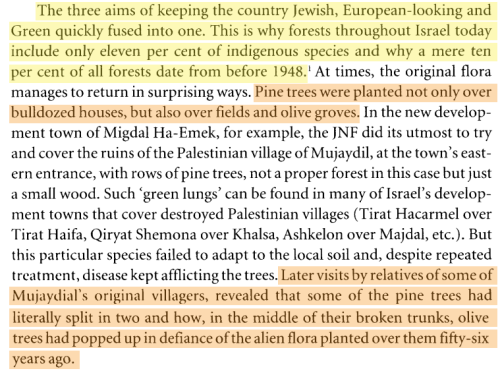Laravel
This Is Under Ch 10 'The Memoricide Of The Nakba' - > 'Virtual Colonialism And The JNF' - Blog Posts
1 year ago
I'm reading about how Israel, in the immediate aftermath of the 1948 Nakba, deliberately replaced olive trees and other indigenous flora with European plants. This ecological disaster, which is now proudly hailed under the banner of 'making the desert bloom,' was done to 'de-Arabize' the landscape, and to cover up - often with fast-growing European pine trees -the ruins of Palestinian villages that were destroyed by Zionists forces.
And I just need everyone to read this passage from Pappé, because the symbolism of what happened to those European pine trees in the desert speaks for itself:

The Ethnic Cleansing of Palestine, by Ilan Pappé (2006, p. 227-228.)
Tags
Loading...
End of content
No more pages to load
Explore Tumblr Blog
Search Through Tumblr Tags